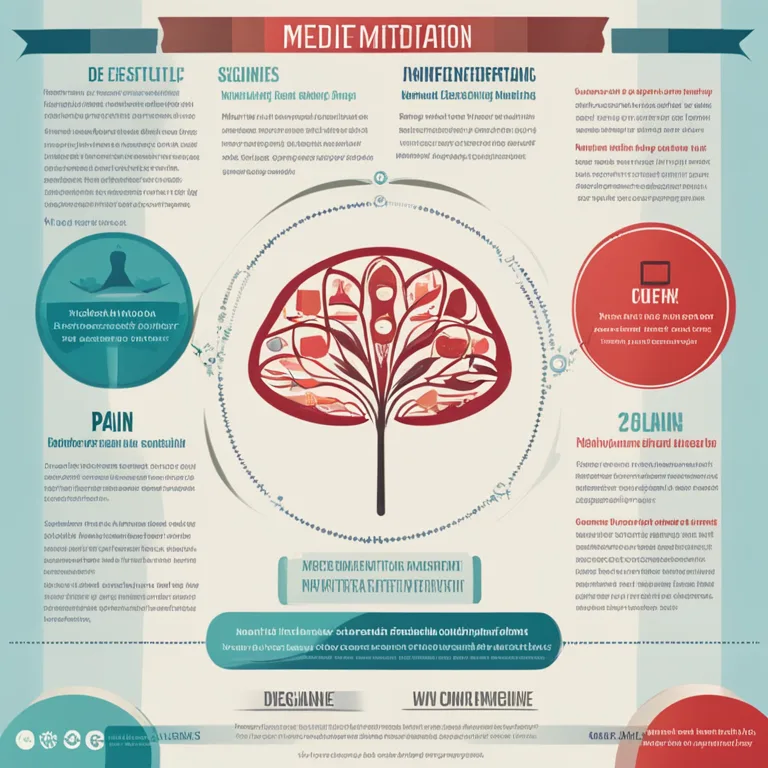
Mindfulness Meditation: A Remedy for Migraine Relief
Discover how mindfulness meditation can be a potent non-pharmaceutical strategy to alleviate migraine headaches and enhance overall well-being.
article by Hina Kurosawa
Migraine Pain and Mindfulness
Migraines are more than just headaches; they're a complex condition with symptoms that can severely affect one's quality of life. Traditional treatment options range from pharmaceutical interventions to lifestyle adjustments. However, as we move deeper into 2024, the emphasis on holistic health has brought mindfulness meditation to the forefront as an effective complementary approach for managing migraine pain. Mindfulness meditation emphasizes staying present and engaged with our experiences without judgment, which can modify the way we perceive pain.

The Science Behind Meditation and Pain
Recent studies have begun to shed light on how mindfulness meditation can change the brain's response to pain. It appears to reduce activity in areas traditionally associated with pain processing, while enhancing regions linked to the regulation of emotions and pain perception. This neuroplasticity suggests that consistent practice may lead to long-term benefits for migraine sufferers by changing how the brain processes and reacts to pain signals.

Starting a Mindfulness Practice
Embarking on a mindfulness journey requires patience and commitment. Beginners are advised to start with short, daily sessions focusing on breath and body sensations. The key is consistency over duration. With regular practice, the capability to remain mindful during painful episodes enhances, potentially lessening the perceived severity of migraine attacks.
Incorporating Mindfulness into Daily Life
Beyond dedicated meditation sessions, mindfulness can be woven into everyday activities. Simple acts such as mindful eating, walking, or even engaging in conversation can serve as practices that train the brain to remain present. This all-day awareness can condition the mind to stay centered during a migraine, potentially dampening the distress associated with it.
Confronting Migraine Triggers Mindfully
Understanding and accepting personal migraine triggers is a vital component of a holistic management plan. A mindfulness approach to triggers involves observing them without judgment and responding calmly, rather than reacting impulsively. This considered response can aid in stress reduction, which is often a significant trigger for migraines.
Evidence-Based Research on Mindfulness and Migraines
In the past year alone, multiple peer-reviewed studies have attested to the effectiveness of mindfulness techniques in mitigating migraine frequency and intensity. One notable study found that participants engaging in mindfulness-based therapy saw a considerable reduction in their migraine days compared to those who did not partake in such practices, establishing a strong case for mindfulness as a supportive therapy in migraine care.
Limitations and Considerations
While the prospects of mindfulness meditation are promising, it is not a standalone cure for migraines. It should be viewed as part of a broader treatment strategy that may include medication, dietary adjustments, and regular exercise. As with any complementary therapy, individuals should consult healthcare professionals to tailor a plan that fits their specific needs.
Published: 1/8/2024
Modified: 1/8/2024
More predictions
Come back here soon to learn more about yourself and your future


Calming the Student Mind: A Guide to Mindfulness Meditation
Discover how mindfulness meditation can benefit high school students, offering a practical solution for stress management and enhanced focus in the academic environment.


A Guide to Leading Mindfulness Meditation
Discover the steps to effectively lead a session of mindfulness meditation, fostering tranquility and awareness in your daily life.


Mindfulness Meditation Benefits for High Schoolers
Discover how mindfulness meditation can help high school students navigate academic pressure, enhance focus, and improve overall wellbeing.